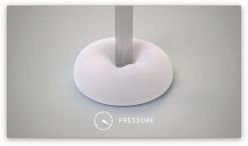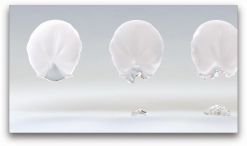Nice looking breasts
Undergoing breast augmentation (enlargement or remodeling surgery) is being chosen by more and more women. Needing a rejuvenating facial plastic surgery comes with "mature" age, but having bigger breasts is usually desired by every women from the moment she realizes that hers won't be getting any bigger. So girls are usually on the operating table but there are also women in their fifties or older who make the choice to change their breasts and being healthy allows them to do so.

Consultation before the procedure
Pre-treatment is a very important consultation when the doctor assesses the condition of the patient's breasts, listens to her request for the shape and size of her breasts, and recommends possible variants of the surgical performance, size and shape of the implant. "In order for a patient to undergo an operation she must be 100% healthy. The first step is an initial consultation where the patient receives all the necessary information about the procedure, post-operative treatment procedures, convalescence, and also the risks associated with the surgery itself. The preoperative examination includes a sonographic or mammographic breast examination. The procedure itself lasts for about one hour and patients usually recover from surgery very well. “During the recovery time it is important for the patient to be disciplined and follow the doctor's instructions,"says MUDr. Martin Skála, Plastic Surgeon of the OB CARE Clinic.
The augmentation, as well as other breast surgeries, are performed under general anesthesia followed by a one to two-day recovery hospitalization. The resulting effect and the post-operative treatment are also affected by apparent details - for example implant surface or silicone gel type.

The implant in the lead role
One of the main criteria for the quality of breast implants is their safety and health. Implants are exposed to many effects and physical strain in the body - whether it's day-to-day sports or in extreme cases such as home or traffic accidents. A safe implant should endure almost any burden that it might be exposed to. Critical parameters observed in clinical trials include, in particular, biocompatibility when testing the ability to receive implants of surrounding tissues without undesirable reactions to the organism. Leading manufacturers of implants are trying to get closer to the natural tissue quality. Biocompatibility tests also exclude the risks of toxicity and carcinogenicity.
In addition to the aforementioned tests of chemical and physical nature, mechanical stress tests are of no less importance. Strength tensile tests test the implant shell when it is stretched to 450% of its original length. The casing must be free from damage after the test. The correct thickness and uniformity of the implant casing is also checked to ensure its strength. For each model, the thickness is different. Earlier implant envelopes were too strong, making the breasts not look natural after the operation and were hard to the touch. With the development of the cohesive gel, the implant coating could be thinner. The thickness of today's implant packaging guarantees a natural look and perfect strength. Usually it is within 2 millimeters.
The state-of-the-art implants are nowadays filled with safe medical silicone, which is made up of cohesive polymers. The cohesive gel has a thicker consistency and even when the entire implant is cut lengthwise, there is no uncontrolled leakage of the gel outside the implant housing.



